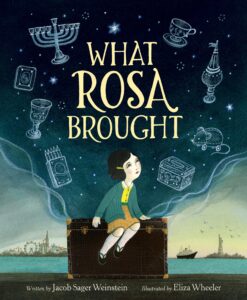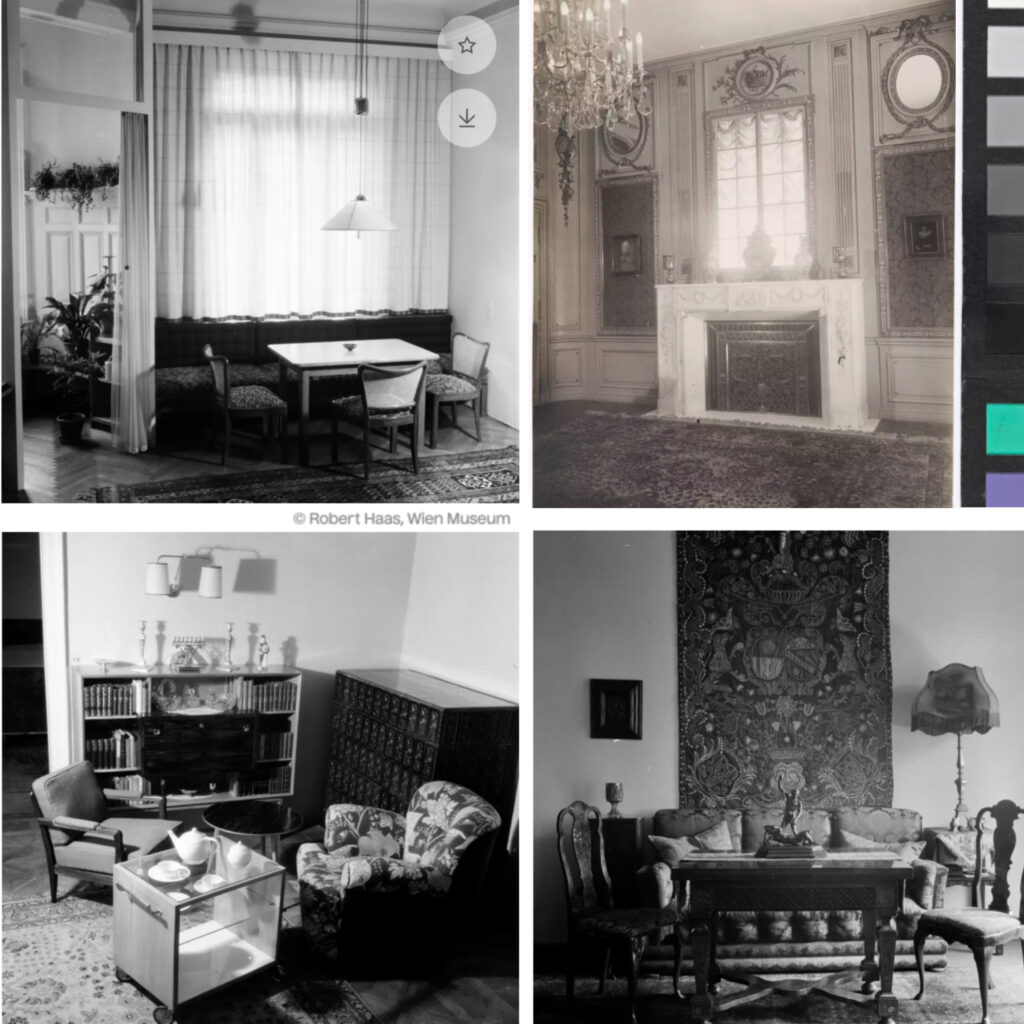Making the ‘ROSA’ Art – Research Treasures
A behind-the-scenes look into the art-making process for ‘What Rosa Brought’
When making art for a book with historical subject matter, there are many research rabbit holes to fall into (as shown in my post about researching Vienna in 1938), as well as searches that come up dry. In the case of ‘What Rosa Brought’ searching for photo reference for furnished interior apartments in Vienna, Austria pre-1940 was where my research came up empty. I could find photos of, and movies set in, opulent private homes and public spaces, but the interiors I needed to draw were for Rosa’s family; specifically a middle-lower class Jewish family’s apartment building.

Not finding good visual reference is, for me, when fixation can set in, and it can be really hard to move on. Usually I just have to let it go and imagine what it may have looked like. In this case, I was going to piece together furniture photos and catalogs and photos of belongings shared from author Jacob Sager Weinstein, and the lovely folks at the Jewish Museum of Vienna, as well as photos on real estate listings of similar time-period apartments. And maybe that would have been fine enough…or maybe I’ll do just one. more. search…
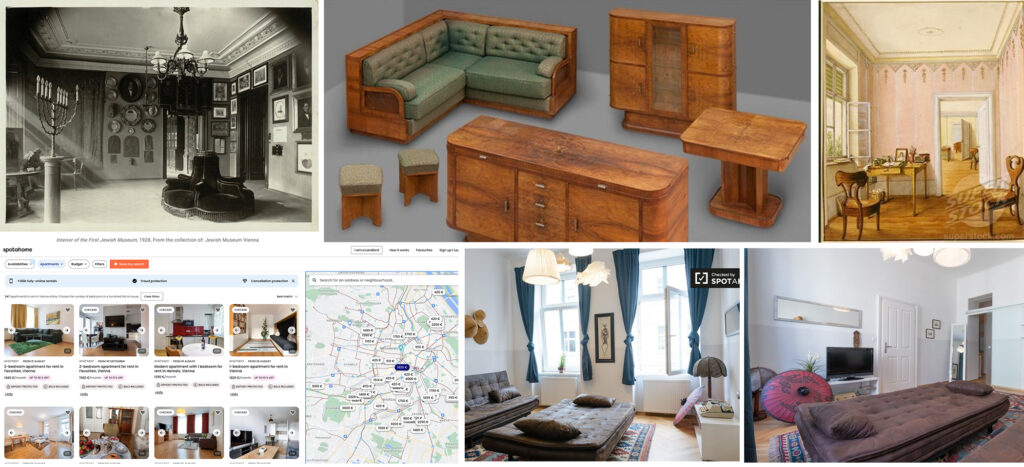
One of those ‘one-more-search’es (which ate up un-justified amounts of time) finally led to a treasure trove just as I was about to give up the gold. After finding the 1890’s model of Vienna through the Wien / Vienna museum, I got searching through their digital archive collections and found the photograph collections of Robert Haas.
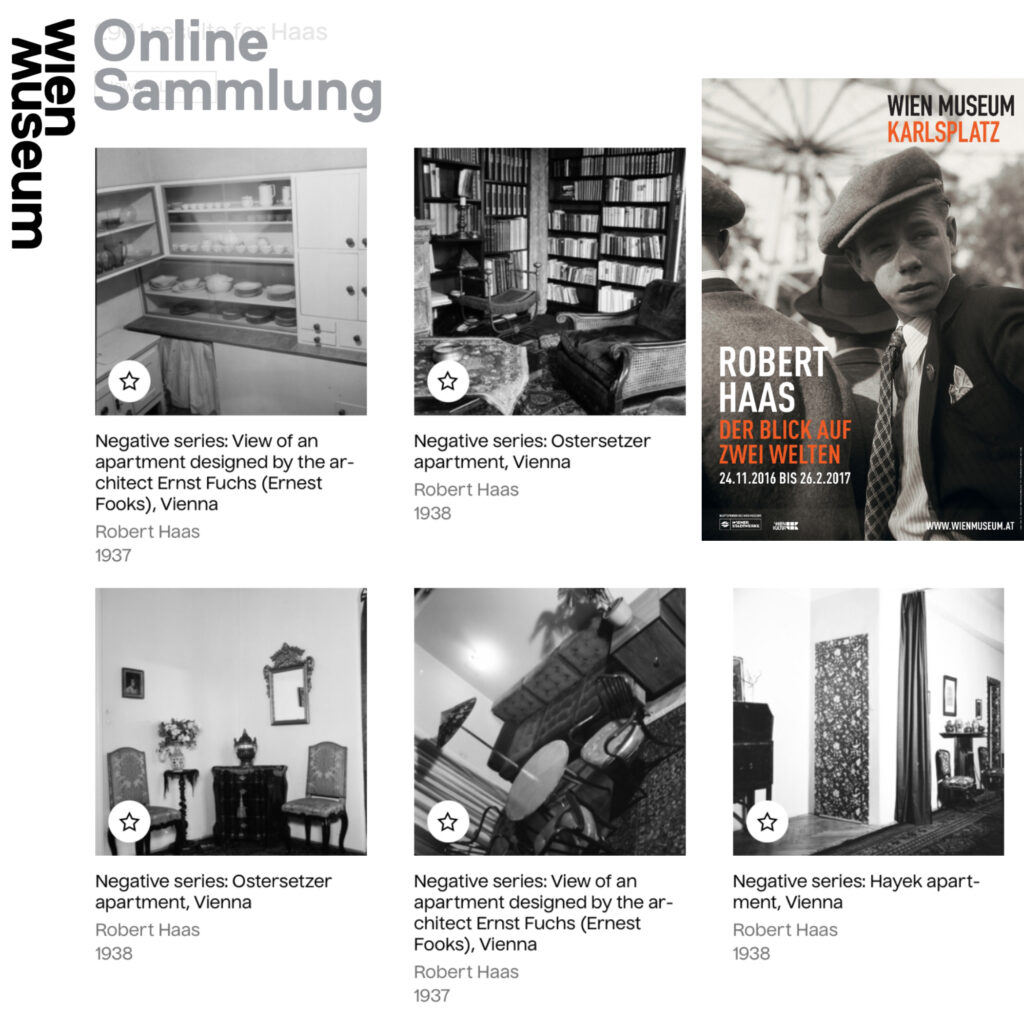
Robert Haas was an Austrian Jewish photographer who started his career as a Graphic Designer. He captured daily life in Vienna through the 1930’s, and as Jews were being made to leave the city after the Nazi takeover, he photographed their interior homes and apartments.
He captured all the details I was searching for and more. Furniture, belongings that reflected Jewish daily life, table settings, and entire rooms of homes. I was able to see in these photos how most kitchen doors had windows above them, and dining room tables were set up in front of booth-like couches. All the wood floors had layers of carpets. All of these details were ones I was able to include in the interior scenes in the book. Were they absolutely essential to the art? Not at all. But all these unique details add specificity and richness to this family’s time and place.
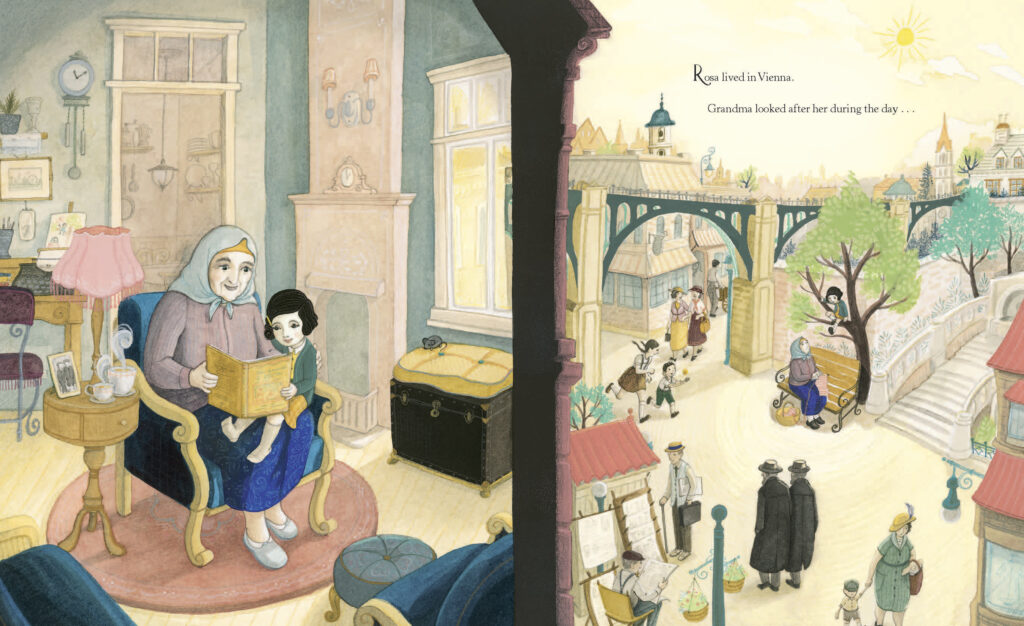
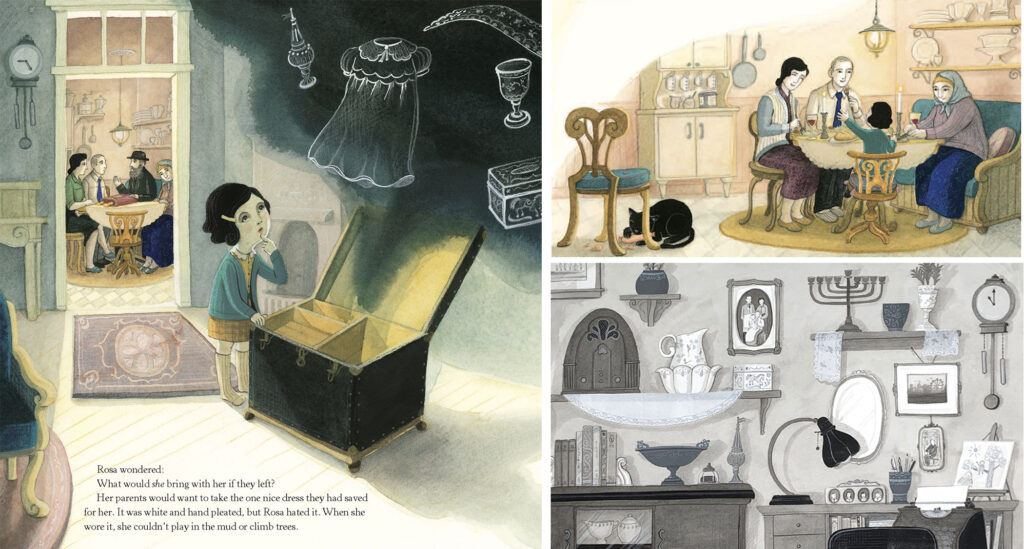
When Haas himself was made to flee Austria, he had the foresight to bring his entire photographic collection with him. If he hadn’t, his photo archive would likely have been lost in the same way much of his early design work was. Even though his career didn’t flourish as a photographer in the U.S. and he had to return to commercial design work, he continued his passion of documenting life in New York City and the U.S. through tender photographs. He might have been entirely forgotten if his archive wasn’t saved by his daughters and returned to the Wien / Vienna Museum, sending his work back to the home city he loved before World War II; giving his work the public spotlight that it has deserved.

To see Robert Haas’s photographs, visit the Wien Museum’s digital archive:
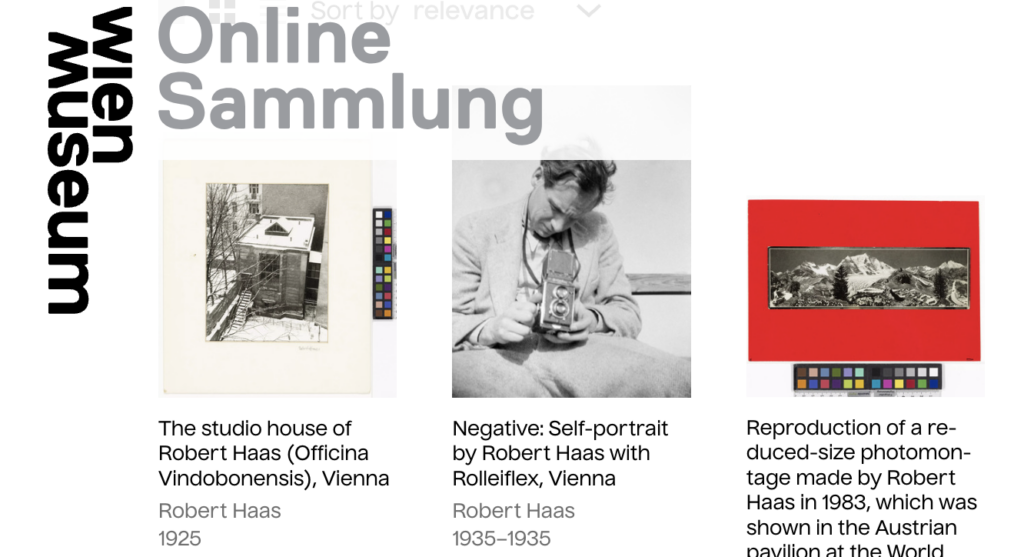
or listen to this interview with Frauke Kreutler, curator of Wien Museum, to hear more:

Thanks for reading!

Explore more posts about my process of making the ‘What Rosa Brought‘ artwork.
-or-
Share ‘What Rosa Brought‘ with your local school, library, or house of worship.
